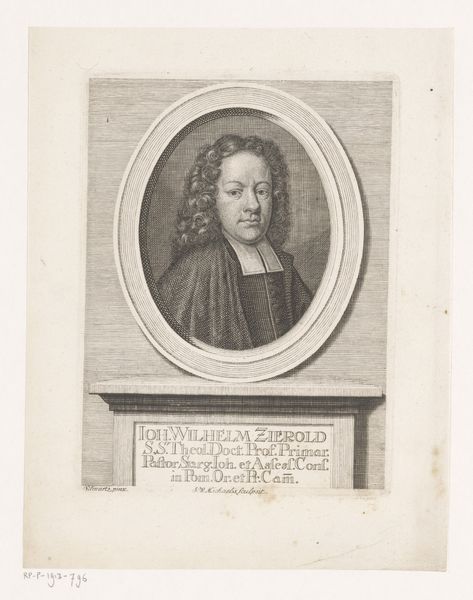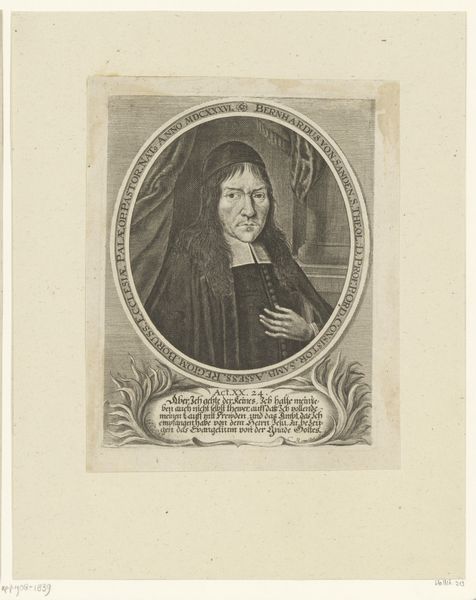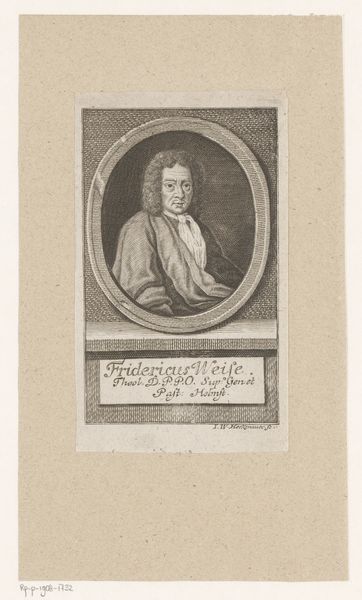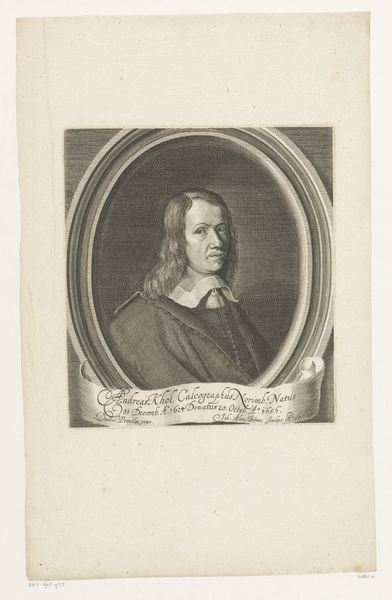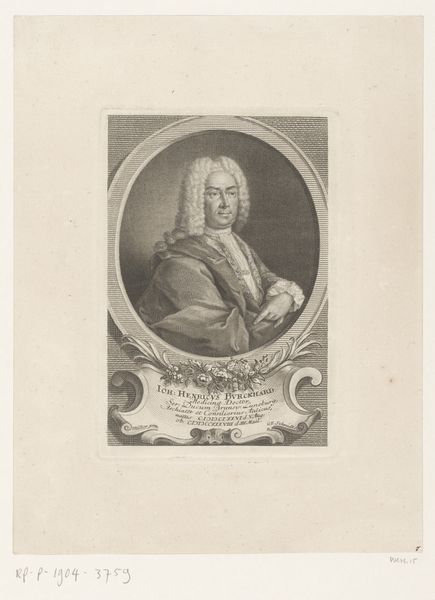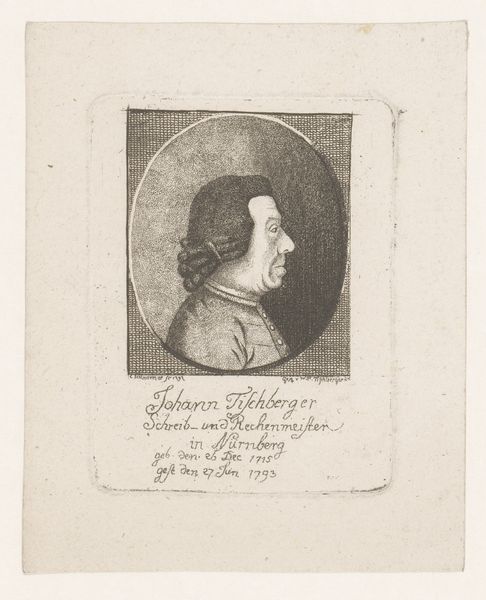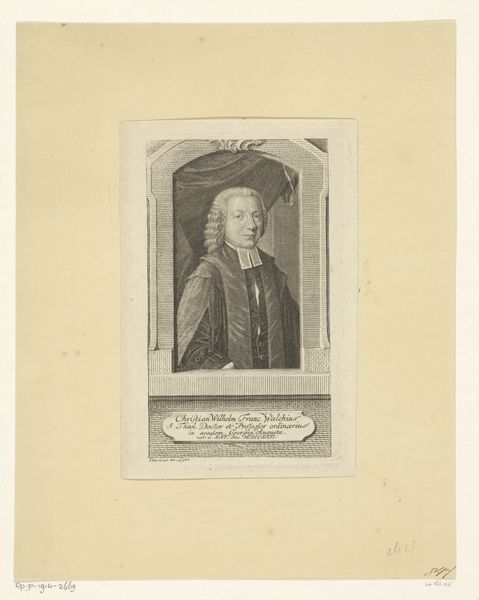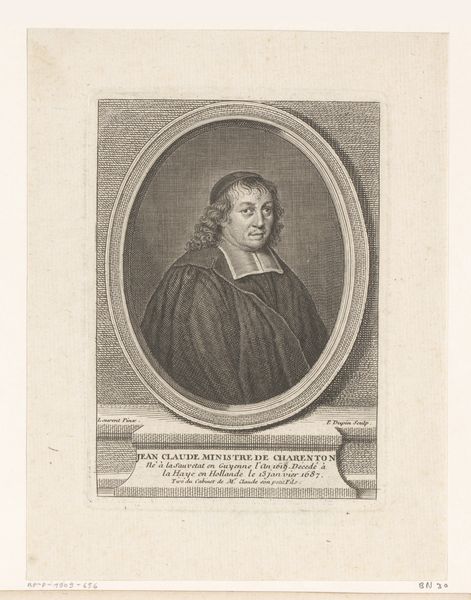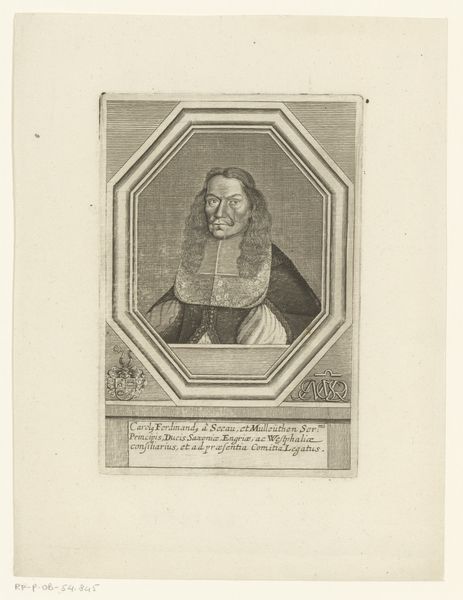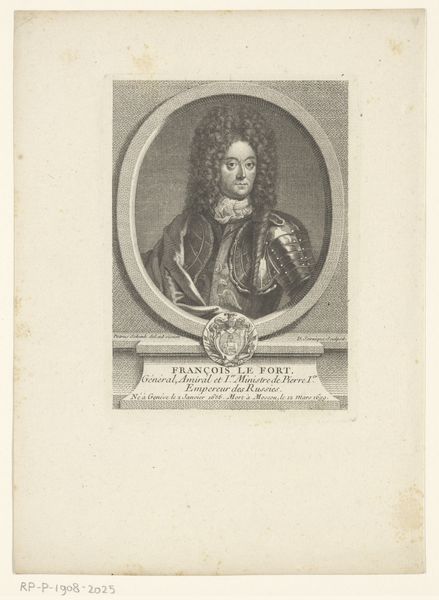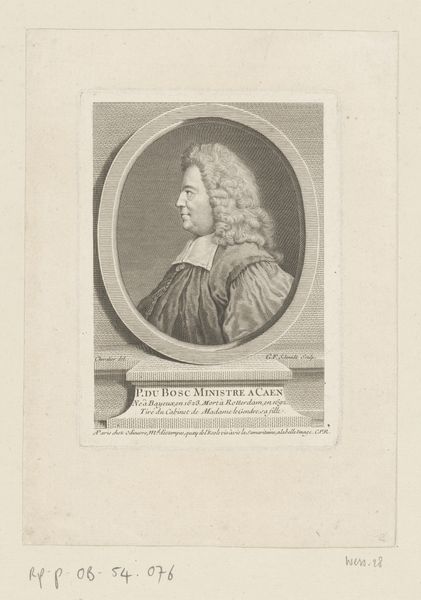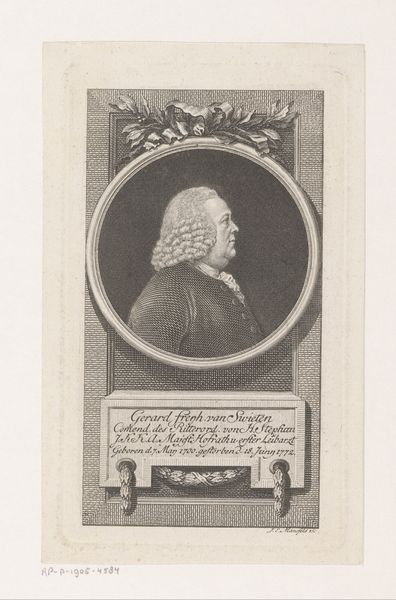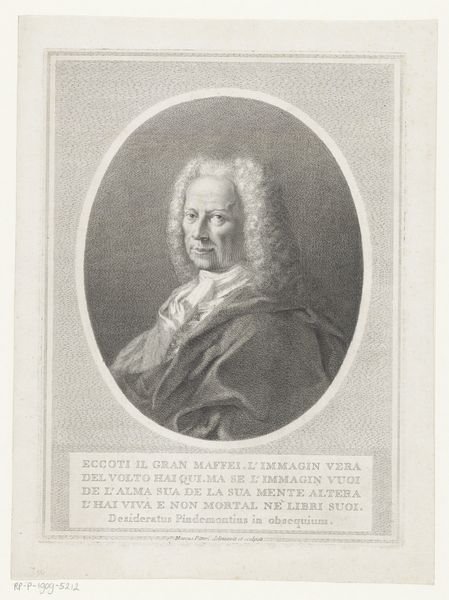
print, engraving
#
portrait
#
baroque
# print
#
old engraving style
#
history-painting
#
engraving
#
realism
Dimensions: height 173 mm, width 108 mm
Copyright: Rijks Museum: Open Domain
Curator: Here we have a rather interesting engraving entitled "Portret van Johann Martin Warnberger," dating back to sometime between 1667 and 1720. It resides here at the Rijksmuseum. Editor: My first impression is that of a somewhat mournful monumentality, captured in miniature. There's a striking weight to the figure despite the small scale of the engraving itself. Curator: Indeed, the oval frame, reminiscent of funerary portraits, coupled with the subject’s slightly downturned gaze, certainly evokes a sense of gravity. In terms of symbology, one may find connections to his trade or status in such engravings common for public figures or prosperous citizens. Editor: Yes, I am seeing something there... The very inscription underneath the portrait tells us that Johann Martin Warnberger was a tradesman in Nuremberg; born in 1639, died in 1667, so the image becomes a testament to upward mobility during that time period, one way of solidifying a certain bourgeois identity. Think about the broader social structures. Who could commission such images and how did it become another symbolic act of distinction and control? Curator: It speaks, too, to the enduring power of portraiture – the desire to preserve and project an image across generations. The very act of commissioning such an engraving underscores a will to legacy. Engravings like these provided accessibility; they allowed a wider audience to own and disseminate the image, broadening its cultural footprint. This is distinct from a unique painted portrait, that may only hang on a wall to impress house guests. Editor: I can see that; although the choice of printmaking as the method is really the core to it all. Was it only about a cheaper way to represent oneself or an entirely new way for the rising classes to rewrite, reimagine, and claim agency over collective identity through widely available symbolic images? It opens up important dialogues about accessibility, power, and representation in art history. Curator: Certainly! The meticulousness of the engraved line captures a wealth of detail, from the texture of his garments to the subtle contours of his face. And consider the material itself: the very act of engraving, a process of meticulous removal and inscription, echoes themes of remembrance and record-keeping. Editor: Absolutely, it brings us full circle back to those initial impressions; such visual echoes resonate profoundly with anyone who grapples with these ideas of identity today. It also urges me to interrogate historical narratives and think of visual imprints and symbols and whose stories are validated across time.
Comments
No comments
Be the first to comment and join the conversation on the ultimate creative platform.

